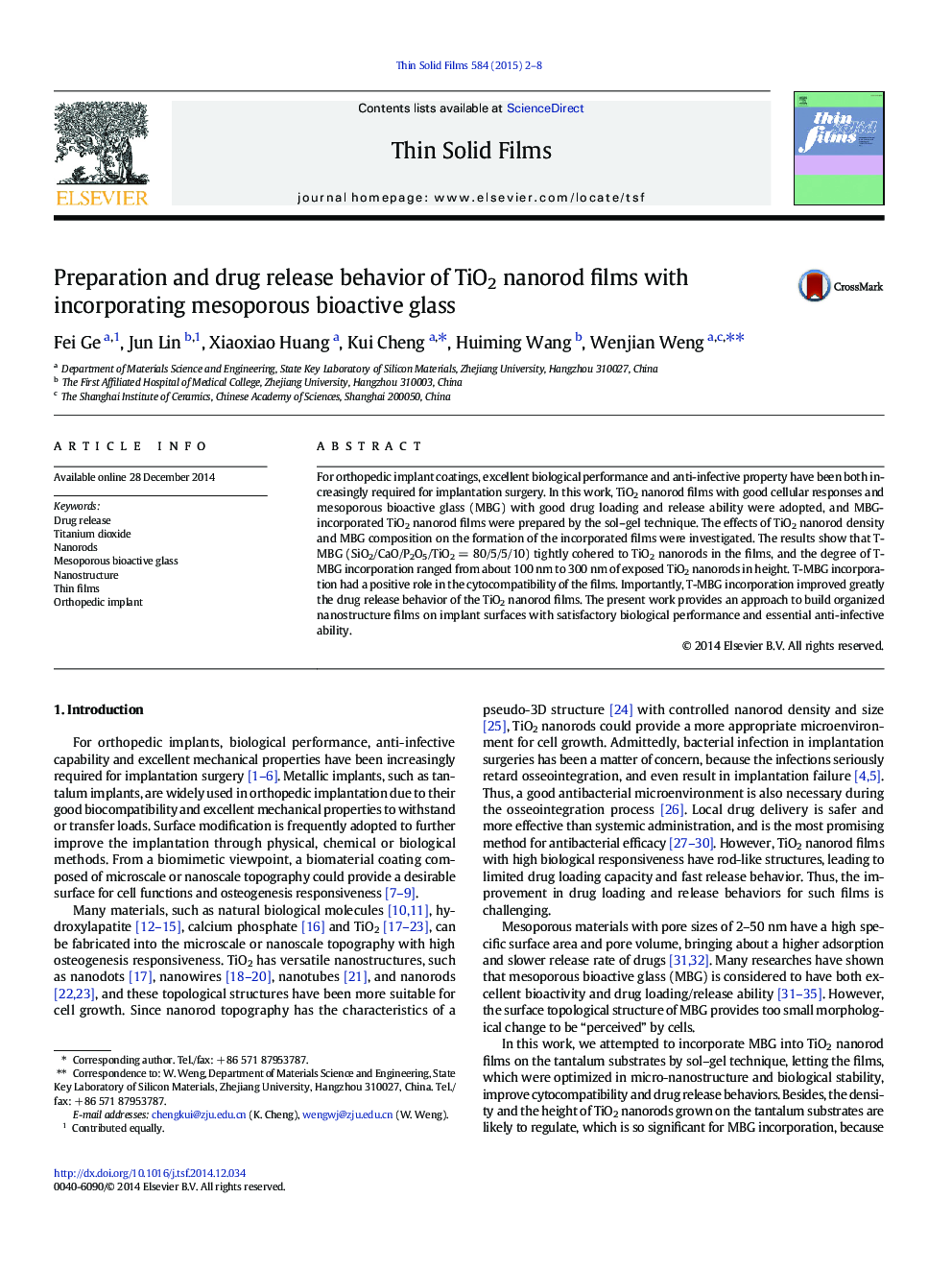| Article ID | Journal | Published Year | Pages | File Type |
|---|---|---|---|---|
| 1664815 | Thin Solid Films | 2015 | 7 Pages |
•Mesoporous bioactive glass (MBG) was controllably incorporated into TiO2 nanorod films.•The MBG incorporation improved greatly the drug release behavior of the films.•The MBG incorporation improved further the cytocompatibility of the films.
For orthopedic implant coatings, excellent biological performance and anti-infective property have been both increasingly required for implantation surgery. In this work, TiO2 nanorod films with good cellular responses and mesoporous bioactive glass (MBG) with good drug loading and release ability were adopted, and MBG-incorporated TiO2 nanorod films were prepared by the sol–gel technique. The effects of TiO2 nanorod density and MBG composition on the formation of the incorporated films were investigated. The results show that T-MBG (SiO2/CaO/P2O5/TiO2 = 80/5/5/10) tightly cohered to TiO2 nanorods in the films, and the degree of T-MBG incorporation ranged from about 100 nm to 300 nm of exposed TiO2 nanorods in height. T-MBG incorporation had a positive role in the cytocompatibility of the films. Importantly, T-MBG incorporation improved greatly the drug release behavior of the TiO2 nanorod films. The present work provides an approach to build organized nanostructure films on implant surfaces with satisfactory biological performance and essential anti-infective ability.
